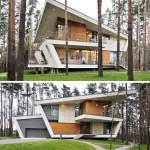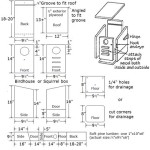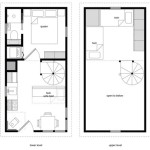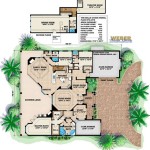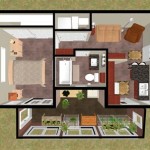House plans for sloped lots address the challenges presented by building on inclined terrain. These plans incorporate specific design elements and construction techniques to ensure stability, functionality, and aesthetic appeal on uneven ground.
Hillside homes, for example, are often built on sloped lots and require specialized plans to accommodate the sloping foundation and drainage requirements. By incorporating terraced levels, retaining walls, and adjustable foundations, house plans for sloped lots allow for safe and habitable structures in challenging terrains.
The utilization of these plans requires careful consideration of site grading, soil stability, and drainage patterns. Through proper engineering and design, house plans for sloped lots can create visually striking and functional homes that maximize the unique characteristics of their hilly surroundings.
When considering house plans for sloped lots, several key points merit attention:
- Site grading
- Soil stability
- Drainage patterns
- Foundation design
- Retaining walls
- Terrace levels
- Landscaping
- Visual impact
- Construction costs
- Local building codes
Addressing these factors during the planning and design stages ensures a safe, functional, and aesthetically pleasing home on a sloped lot.
Site grading
Site grading is the process of altering the topography of a sloped lot to create a level building pad and ensure proper drainage. This involves cutting, filling, and compacting the soil to achieve the desired slope and elevation.
- Establishing a level building pad
The first step in site grading is to establish a level area for the foundation of the house. This may require cutting into the hillside to create a flat surface or filling in low areas to raise the building pad to the desired elevation.
- Creating proper drainage
Proper drainage is essential to prevent water from accumulating around the foundation and causing damage. Site grading should include the creation of drainage swales, French drains, or other drainage features to direct water away from the house and downslope.
- Stabilizing the soil
Sloped lots are often prone to erosion, especially during heavy rains. Site grading should include measures to stabilize the soil, such as terracing, retaining walls, or planting vegetation, to prevent soil loss and protect the foundation.
- Compacting the soil
Once the desired slope and drainage patterns have been established, the soil must be compacted to ensure a stable base for the foundation. Compaction can be achieved using heavy machinery or manual tampers.
Proper site grading is essential for the structural integrity, functionality, and longevity of a house built on a sloped lot. It helps to prevent soil erosion, foundation damage, and drainage issues, ensuring a safe and habitable living environment.
Soil stability
The stability of the soil on a sloped lot is of paramount importance for the safety and integrity of a house built on that lot. Soil stability refers to the ability of the soil to resist movement or deformation under the weight of the structure and other loads.
Factors affecting soil stability on sloped lots include:
- Soil type
Different soil types have varying degrees of stability. Sandy soils, for example, are more prone to erosion and instability than clay soils.
- Soil moisture
Wet or saturated soils are less stable than dry soils. Water can weaken the bonds between soil particles and increase the likelihood of landslides or soil collapse.
- Slope angle
The steeper the slope, the greater the potential for soil instability. Steeper slopes exert more force on the soil, making it more likely to move or deform.
- Vegetation
Vegetation helps to stabilize soil by binding the soil particles together with its roots. Areas with sparse vegetation are more prone to erosion and soil instability.
- Previous disturbances
Sloped lots that have been previously disturbed by construction activities or natural events, such as landslides, may have compromised soil stability.
Assessing soil stability on a sloped lot typically involves a geotechnical investigation conducted by a qualified engineer or geologist. The investigation may include soil testing, slope stability analysis, and recommendations for mitigating potential soil stability issues.
Mitigating soil stability issues
There are a number of techniques that can be used to mitigate soil stability issues on sloped lots and ensure the safety and integrity of a house built on that lot.
- Retaining walls
Retaining walls are structures designed to hold back soil and prevent it from moving downslope. They can be constructed from a variety of materials, such as concrete, stone, or wood.
- Terracing
Terracing involves creating a series of level platforms on a sloped lot. This helps to reduce the overall slope angle and create more stable conditions for building.
- Soil reinforcement
Soil reinforcement techniques can be used to increase the strength and stability of the soil on a sloped lot. These techniques may involve the installation of geotextiles, soil anchors, or other materials.
- Drainage control
Proper drainage control is essential for maintaining soil stability on a sloped lot. This may involve the installation of drainage swales, French drains, or other drainage features to redirect water away from the slope and prevent soil saturation.
- Vegetation
Planting vegetation on a sloped lot can help to stabilize the soil by binding the soil particles together with its roots. This is especially important in areas where natural vegetation has been removed.
By carefully considering soil stability and implementing appropriate mitigation measures, it is possible to build safe and stable houses on sloped lots.
Drainage patterns
Proper drainage is essential for any house, but it is especially important for houses built on sloped lots. Water can quickly accumulate on a sloped lot and cause damage to the foundation, landscaping, and even the house itself. Therefore, it is important to carefully consider drainage patterns when designing a house plan for a sloped lot.
The first step in designing a drainage plan is to identify the natural drainage patterns on the lot. This can be done by observing the way water flows during a rainstorm. Once the natural drainage patterns have been identified, the house plan can be designed to take advantage of them.
There are a number of different ways to incorporate drainage into a house plan for a sloped lot. Some common methods include:
- Grading
Grading is the process of sloping the land around the house to direct water away from the foundation. This can be done by creating a gentle slope away from the house, or by creating terraces or swales to channel water away from the house.
- Downspouts
Downspouts are pipes that carry water from the roof of the house to the ground. It is important to extend downspouts away from the foundation of the house to prevent water from seeping into the basement or crawlspace.
- French drains
French drains are trenches filled with gravel that are used to collect and drain water away from the foundation of the house. French drains are typically installed around the perimeter of the house and are connected to a sump pump that pumps the water away from the house.
- Dry wells
Dry wells are holes dug in the ground that are filled with gravel. Dry wells are used to collect and store water runoff from the roof or other sources. The water stored in the dry well can then be used for irrigation or other purposes.
By carefully considering drainage patterns when designing a house plan for a sloped lot, it is possible to prevent water damage and ensure the long-term integrity of the house.
Foundation design
The foundation of a house is one of the most important aspects of its construction, and this is especially true for houses built on sloped lots. The foundation must be designed to withstand the forces of gravity, wind, and seismic activity, as well as the additional forces created by the slope of the lot.
There are a number of different foundation types that can be used for houses on sloped lots. The most common type is the stepped footing foundation. This type of foundation is made up of a series of concrete footings that are stepped down the slope of the lot. The footings are connected by concrete walls, which create a stable base for the house.
Another common type of foundation for houses on sloped lots is the pier and beam foundation. This type of foundation is made up of a series of concrete piers that are driven into the ground. The piers are then connected by concrete beams, which create a stable base for the house. Pier and beam foundations are often used on lots with steep slopes or unstable soil conditions.
In some cases, a slab-on-grade foundation may be used for a house on a sloped lot. This type of foundation is made up of a single concrete slab that is poured directly on the ground. Slab-on-grade foundations are typically only used on lots with gentle slopes and stable soil conditions.
The type of foundation that is best for a particular house on a sloped lot will depend on the specific conditions of the lot, including the slope of the lot, the soil conditions, and the size and weight of the house.
Factors to consider when designing a foundation for a house on a sloped lot
There are a number of factors that must be considered when designing a foundation for a house on a sloped lot. These factors include:
- The slope of the lot
The steeper the slope of the lot, the more challenging it will be to design a stable foundation. The foundation must be designed to withstand the forces of gravity, which will be greater on a steeper slope.
- The soil conditions
The type of soil on the lot will also affect the design of the foundation. Sandy soils are less stable than clay soils, and will require a more robust foundation.
- The size and weight of the house
The size and weight of the house will also affect the design of the foundation. A larger and heavier house will require a more robust foundation.
By carefully considering all of these factors, it is possible to design a foundation for a house on a sloped lot that is safe and stable.
Retaining walls
Retaining walls are an important part of many house plans for sloped lots. They are used to hold back soil and prevent it from sliding down the slope. This can be important for protecting the foundation of the house, as well as any landscaping or other features that are located on the slope.
There are a number of different types of retaining walls that can be used on sloped lots. The type of retaining wall that is best for a particular project will depend on the specific conditions of the lot, including the height of the slope, the type of soil, and the amount of water that is present.
- Gravity retaining walls
Gravity retaining walls are the most common type of retaining wall. They are made of concrete or stone and are held in place by their own weight. Gravity retaining walls are typically used for slopes that are less than 4 feet high.
- Cantilevered retaining walls
Cantilevered retaining walls are made of reinforced concrete and are designed to cantilever out from the slope. This type of retaining wall is typically used for slopes that are between 4 and 8 feet high.
- Sheet pile retaining walls
Sheet pile retaining walls are made of steel or vinyl sheets that are driven into the ground. This type of retaining wall is typically used for slopes that are over 8 feet high or for slopes that are unstable.
- Mechanically stabilized earth (MSE) retaining walls
MSE retaining walls are made of concrete blocks or geotextiles that are reinforced with steel. This type of retaining wall is typically used for slopes that are over 10 feet high or for slopes that are very unstable.
Retaining walls can be an important part of a house plan for a sloped lot. By carefully considering the type of retaining wall that is best for the specific conditions of the lot, it is possible to create a safe and stable foundation for the house.
Terrace levels
Terrace levels are a common feature in house plans for sloped lots. They are used to create level areas on a sloping lot, which can be used for a variety of purposes, such as outdoor living spaces, gardens, or parking areas.
Terraces can be created using a variety of materials, including wood, concrete, or stone. They are typically supported by retaining walls, which help to hold back the soil and prevent it from sliding down the slope.
The number of terrace levels that are needed for a particular lot will depend on the slope of the lot and the desired use of the space. For example, a lot with a gentle slope may only require one or two terrace levels, while a lot with a steep slope may require three or more terrace levels.
When designing terrace levels, it is important to consider the following factors:
- The slope of the lot
The steeper the slope of the lot, the more terrace levels that will be needed. The slope of the lot will also determine the height of the retaining walls that are needed.
- The desired use of the space
The intended use of the terrace levels will also affect the design. For example, if the terrace levels will be used for outdoor living, it is important to consider the amount of sunlight that the area will receive and the privacy that is desired.
- The budget
The cost of building terrace levels will vary depending on the materials that are used and the size of the area. It is important to factor the cost of construction into the design process.
By carefully considering all of these factors, it is possible to design terrace levels that are both functional and aesthetically pleasing.
In addition to the above factors, it is also important to consider the following when designing terrace levels:
- Drainage
It is important to ensure that the terrace levels are properly drained to prevent water from accumulating and causing damage to the retaining walls or the house.
- Access
It is also important to consider how people will access the terrace levels. This may involve the use of stairs, ramps, or elevators.
- Maintenance
Finally, it is important to consider the maintenance requirements of the terrace levels. This may include cleaning, sealing, or repairing the retaining walls and other materials.
By carefully considering all of these factors, it is possible to design terrace levels that are both functional and aesthetically pleasing.
Landscaping
Landscaping is an important consideration for any house plan, but it is especially important for houses built on sloped lots. The right landscaping can help to stabilize the soil, control erosion, and improve the overall appearance of the property.
- Plant trees and shrubs
Trees and shrubs can help to hold the soil in place and prevent erosion. They can also provide shade, which can help to cool the house in the summer. When choosing trees and shrubs for a sloped lot, it is important to select species that are well-suited to the local climate and soil conditions.
- Use groundcovers
Groundcovers are low-growing plants that can help to cover the soil and prevent erosion. They are also a good choice for areas that are difficult to mow or maintain. When choosing groundcovers for a sloped lot, it is important to select species that are drought-tolerant and can withstand the rigors of a sloping environment.
- Install a retaining wall
A retaining wall can help to hold back soil and prevent it from sliding down the slope. Retaining walls can be made from a variety of materials, including concrete, stone, or wood. When installing a retaining wall, it is important to ensure that it is properly engineered and constructed to withstand the forces of the slope.
- Create a drainage system
A drainage system can help to prevent water from accumulating on the slope and causing erosion. Drainage systems can be installed using a variety of methods, including French drains, dry wells, and swales. When designing a drainage system for a sloped lot, it is important to consider the amount of rainfall that the area receives and the slope of the lot.
By following these tips, you can create a landscape that is both beautiful and functional for your sloped lot.
Visual impact
The visual impact of a house on a sloped lot is an important consideration for any homeowner. The right design can take advantage of the natural beauty of the slope and create a home that is both visually appealing and functional.
One of the most important things to consider when designing a house on a sloped lot is the orientation of the house. The house should be positioned so that it takes advantage of the views and natural light. For example, a house with a southern exposure will have more natural light than a house with a northern exposure. Additionally, the house should be positioned so that it minimizes the visual impact on the surrounding landscape.
Another important consideration is the use of materials. The materials used to build the house should be in harmony with the surrounding environment. For example, a house built on a wooded lot may use natural materials such as wood and stone. Additionally, the colors of the house should be chosen carefully to complement the surrounding landscape.
Finally, the landscaping around the house should be carefully planned to enhance the visual impact of the property. The landscaping should be designed to complement the architecture of the house and to create a cohesive look. Additionally, the landscaping should be designed to minimize erosion and to provide privacy.
Construction costs
Building a house on a sloped lot can be more expensive than building a house on a flat lot. This is due to the additional costs associated with site preparation, foundation construction, and drainage systems.
Site preparation costs
Site preparation costs for a sloped lot can be higher than for a flat lot. This is because the land may need to be graded to create a level building pad. Additionally, retaining walls may need to be installed to hold back the soil on the slope.
Foundation construction costs
Foundation construction costs for a sloped lot can also be higher than for a flat lot. This is because the foundation must be designed to withstand the forces of the slope. This may require the use of special foundation materials and construction techniques.
Drainage system costs
Drainage system costs for a sloped lot can be higher than for a flat lot. This is because a drainage system is necessary to prevent water from accumulating on the slope and causing erosion. The drainage system may include French drains, dry wells, and swales.
In addition to the above costs, there are other factors that can affect the cost of building a house on a sloped lot. These factors include the size of the house, the complexity of the design, and the local building codes.
Paragraph after details
It is important to factor in the additional costs associated with building on a sloped lot when budgeting for a new home. By carefully considering all of the costs involved, you can avoid any surprises down the road.
Local building codes
Local building codes are regulations that govern the construction of buildings within a specific jurisdiction. These codes are in place to ensure that buildings are safe and habitable, and that they meet certain minimum standards of construction.
When it comes to house plans for sloped lots, there are a number of specific building code requirements that must be met. These requirements may vary from jurisdiction to jurisdiction, but they typically include the following:
- Foundation design
The foundation of a house on a sloped lot must be designed to withstand the forces of the slope. This may require the use of special foundation materials and construction techniques.
- Drainage systems
A drainage system is necessary to prevent water from accumulating on the slope and causing erosion. The drainage system may include French drains, dry wells, and swales.
- Retaining walls
Retaining walls may be required to hold back the soil on the slope. Retaining walls must be properly designed and constructed to withstand the forces of the slope.
- Landscaping
Landscaping can be used to help stabilize the soil on the slope and prevent erosion. Landscaping requirements may vary depending on the jurisdiction.
It is important to check with the local building department to determine the specific building code requirements for house plans on sloped lots in your area. Failure to comply with the building code can result in delays or even the rejection of your building permit.
In addition to the above requirements, local building codes may also address other issues related to house plans for sloped lots, such as:
- Setbacks
Setbacks are the minimum distances that a building must be set back from the property line. Setbacks may be different for different types of buildings and for different slopes.
- Height restrictions
Height restrictions may be in place to limit the height of buildings in certain areas. Height restrictions may be different for different types of buildings and for different slopes.
- Fire safety
Fire safety requirements may be more stringent for buildings on sloped lots. These requirements may include the use of fire-resistant materials and the installation of fire sprinklers.
- Accessibility
Accessibility requirements may be in place to ensure that buildings are accessible to people with disabilities. These requirements may include the installation of ramps and elevators.
By carefully considering all of the local building code requirements, you can ensure that your house plan for a sloped lot is safe, habitable, and compliant with the law.










Related Posts

